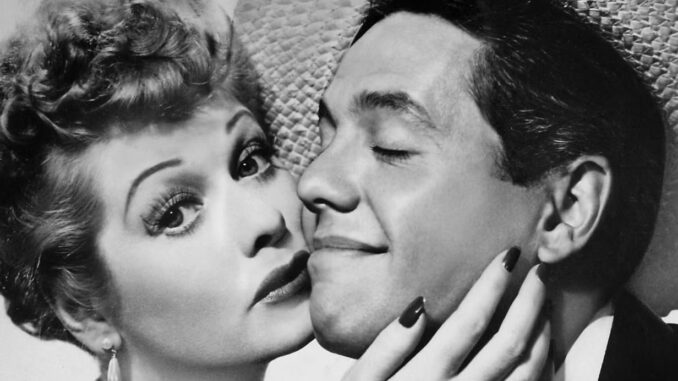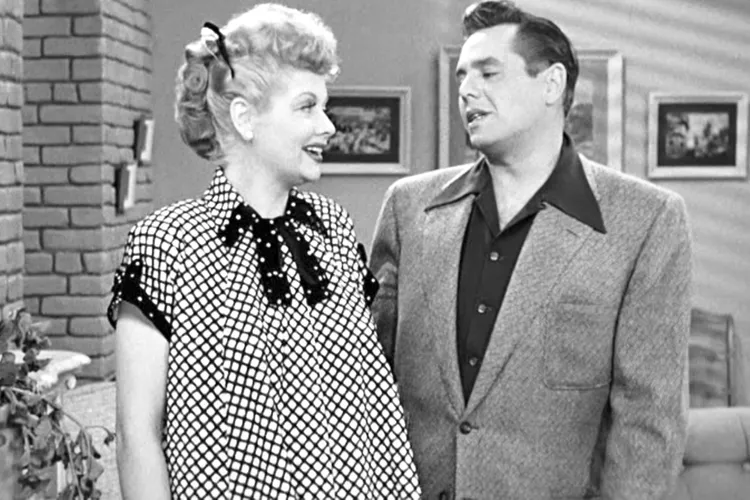
In the history of American television, few creative partnerships have left as profound a legacy as Lucille Ball and Desi Arnaz. Their collaboration on I Love Lucy redefined both comedy and production, giving birth to the modern sitcom and changing how audiences understood television as an art form. Yet, beyond the laughter, the couple’s real-life relationship — marked by passion, tension, and enduring affection — continues to fascinate generations of fans. Arnaz’s final reflections on Ball, shared late in his life, capture the essence of a partnership that transcended its challenges and revealed how two distinct geniuses could complement one another with extraordinary precision.
Lucille Ball was a powerhouse of comedic timing and visual storytelling. She possessed an unmatched ability to turn simple domestic moments into timeless physical comedy. Desi Arnaz, by contrast, was the strategist — a visionary producer and musician who understood the mechanics of the entertainment industry. Together, they built Desilu Productions, one of the first artist-run studios in Hollywood history, responsible not only for I Love Lucy but for trailblazing shows like Star Trek and The Untouchables. Their dynamic represented the meeting point of artistry and innovation: Ball brought creative instinct, Arnaz brought structure and foresight.
By the time I Love Lucy ended its original run in 1957, their marriage had already begun to fracture. Fame and relentless production schedules placed pressure on their personal lives. Yet, even as they separated in 1960, their mutual respect never disappeared. Arnaz’s later reflections on their years together reveal that he continued to admire her brilliance, often crediting her with shaping modern television comedy. His acknowledgment that their professional and creative synergy remained intact — even after their marriage dissolved — has become a defining element of their shared legacy.
Their partnership demonstrated that creative chemistry doesn’t always require harmony. On set, their collaboration was both disciplined and volatile. Arnaz’s perfectionist tendencies often clashed with Ball’s improvisational energy. Still, these differences generated innovation. For instance, their decision to film I Love Lucy before a live studio audience using multiple cameras was revolutionary, blending stage performance with cinematic technique. That technical innovation, guided by Arnaz’s production expertise and Ball’s performance instincts, remains the industry standard for sitcoms today.
In retrospect, Arnaz’s understanding of Ball’s comedic rhythm was integral to the show’s success. He recognized that her humor derived not from words alone but from physical expression — timing, gesture, and surprise. That sensitivity allowed I Love Lucy to function with extraordinary cohesion. Each gag, however chaotic it appeared, was carefully engineered. Arnaz’s final reflections often emphasized this synchronicity: their ability to anticipate each other’s creative decisions without words.

Beyond their technical and artistic achievements, the couple’s story illustrates the human side of creative collaboration. Fame and pressure tested their resilience, but the emotional foundation of their relationship endured. Even after their separation, they maintained professional and personal respect. Arnaz continued to oversee syndication rights for I Love Lucy, ensuring that Ball’s legacy was preserved. In later years, their children would often remark that their parents’ affection, though complicated, was built on a deep understanding of shared purpose.
Their enduring relevance also reflects how I Love Lucy remains embedded in American culture. The show was one of the first to portray a multicultural marriage on television — a Cuban bandleader married to an American woman — at a time when such representation was rare. That authenticity came directly from Arnaz and Ball’s real relationship, challenging stereotypes and humanizing cultural differences through humor. Decades later, as Hollywood continues to confront diversity and inclusion, the series stands as an early example of representation done with sincerity and charm.
Arnaz’s later years were quieter but reflective. Having stepped back from active production, he spent much of his time in California, occasionally consulting on projects related to I Love Lucy. Observers often noted that, despite their separation, he continued to speak of Ball with admiration. His recollections focused less on the personal difficulties and more on the creative triumphs they achieved together. When he passed away in 1986, those who knew him said his thoughts of Ball were filled with warmth — a final acknowledgment that their creative bond had outlasted every other part of their story.
In many ways, the enduring appeal of Lucille Ball and Desi Arnaz lies in their dual legacy: the humor that made audiences laugh and the innovation that built the foundation of television as we know it. Their partnership remains one of Hollywood’s rare examples of equal genius meeting at the perfect time, each elevating the other to new creative heights. Arnaz’s final reflections confirm what history has long recognized — that the brilliance of I Love Lucy was not merely the product of luck, but of two extraordinary minds perfectly aligned in purpose, even when separated by circumstance.
